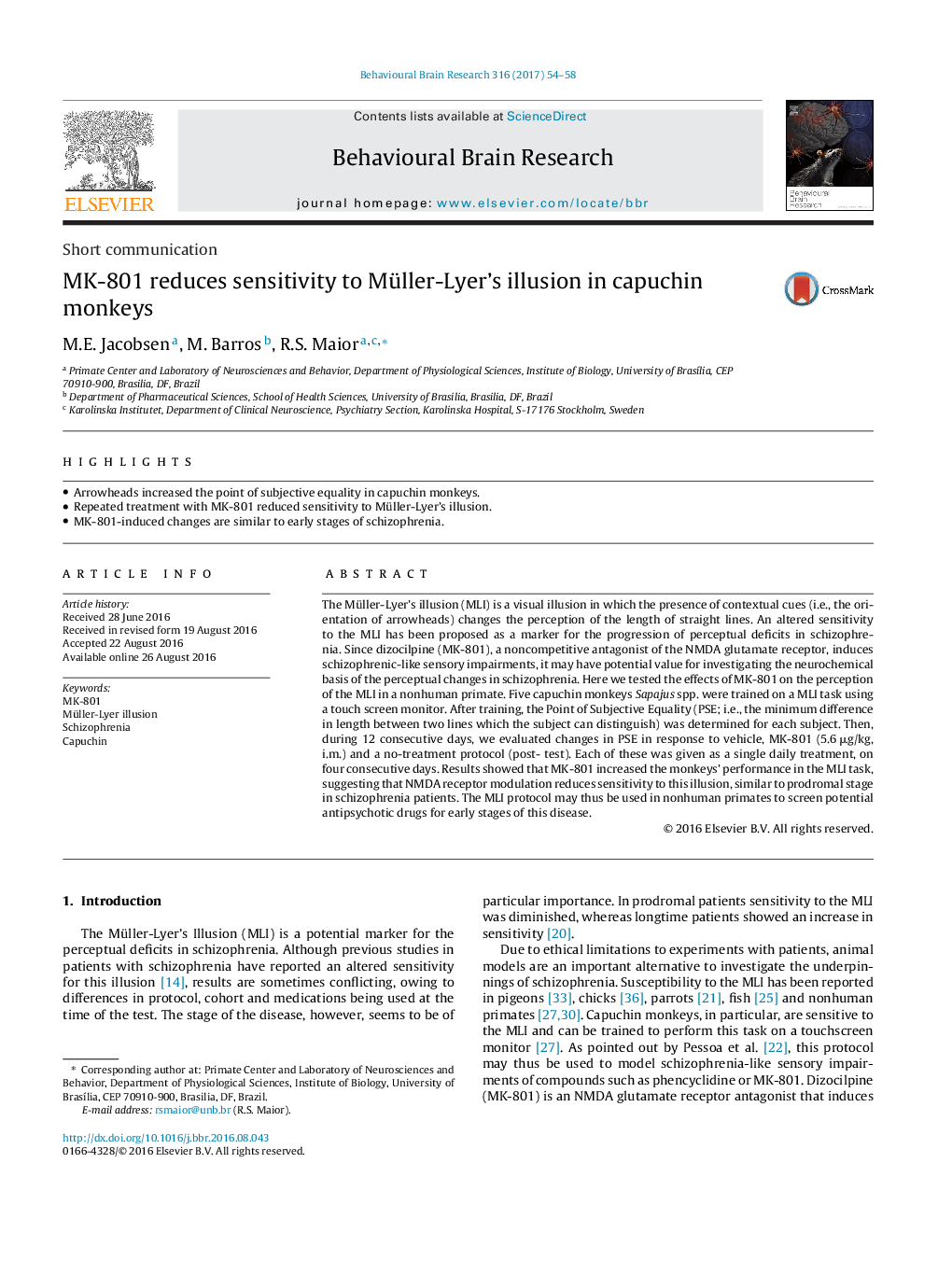| Article ID | Journal | Published Year | Pages | File Type |
|---|---|---|---|---|
| 4312023 | Behavioural Brain Research | 2017 | 5 Pages |
•Arrowheads increased the point of subjective equality in capuchin monkeys.•Repeated treatment with MK-801 reduced sensitivity to Müller-Lyer’s illusion.•MK-801-induced changes are similar to early stages of schizophrenia.
The Müller-Lyer’s illusion (MLI) is a visual illusion in which the presence of contextual cues (i.e., the orientation of arrowheads) changes the perception of the length of straight lines. An altered sensitivity to the MLI has been proposed as a marker for the progression of perceptual deficits in schizophrenia. Since dizocilpine (MK-801), a noncompetitive antagonist of the NMDA glutamate receptor, induces schizophrenic-like sensory impairments, it may have potential value for investigating the neurochemical basis of the perceptual changes in schizophrenia. Here we tested the effects of MK-801 on the perception of the MLI in a nonhuman primate. Five capuchin monkeys Sapajus spp. were trained on a MLI task using a touch screen monitor. After training, the Point of Subjective Equality (PSE; i.e., the minimum difference in length between two lines which the subject can distinguish) was determined for each subject. Then, during 12 consecutive days, we evaluated changes in PSE in response to vehicle, MK-801 (5.6 μg/kg, i.m.) and a no-treatment protocol (post- test). Each of these was given as a single daily treatment, on four consecutive days. Results showed that MK-801 increased the monkeys’ performance in the MLI task, suggesting that NMDA receptor modulation reduces sensitivity to this illusion, similar to prodromal stage in schizophrenia patients. The MLI protocol may thus be used in nonhuman primates to screen potential antipsychotic drugs for early stages of this disease.
